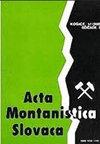Oppositional Coyote Optimization based Feature Selection with Deep Learning Model for Intrusion Detection in Fog-Assisted Wireless Sensor Network
IF 1.4
4区 地球科学
Q2 GEOSCIENCES, MULTIDISCIPLINARY
引用次数: 0
Abstract
Recently, Wireless Sensor Networks (WSN) and the Internet of Things (IoT) become widespread in several real-time applications. Since IoT devices have generated a huge amount of data, the processing of data at the cloud server leads to high delay. To reduce the delay, fog-assisted WSN can be developed where the Fog Nodes are kept at the edge of the network nearer to the client. Besides, security becomes a challenging issue in fog-assisted WSN and can be accomplished by using Intrusion Detection System (IDS). This paper presents an Oppositional Coyote Optimization based feature selection with Cat Swarm Optimization based Bidirectional Gated Recurrent Unit (OCOA-CSBiGRU) for intrusion detection in fog-assisted WSN. The intention of the OCOA-CSBiGRU technique is to identify the occurrence of intrusions in the fog-assisted WSN by the use of feature selection and classification models. The proposed OCOA-CSBiGRU technique initially designs a novel OCOA-based feature selection technique for the optimal selection of features. Besides, the BiGRU model is utilized for the detection and classification of intrusions. In order to improve the detection efficiency of the BiGRU model, the Cat Swarm Optimization (CSO) algorithm has been utilized. A comprehensive experimental analysis is carried out on benchmark datasets, and the results indicatebetter outcomes of the OCOA-CSBiGRU technique over the recent methods interms of different metrics.基于对抗土狼优化的深度学习模型在雾辅助无线传感器网络入侵检测中的应用
近年来,无线传感器网络(WSN)和物联网(IoT)在一些实时应用中得到了广泛的应用。由于物联网设备产生了大量的数据,因此在云服务器上处理数据会导致高延迟。为了减少延迟,可以开发雾辅助WSN,其中雾节点保持在离客户端更近的网络边缘。此外,在雾辅助无线传感器网络中,安全是一个具有挑战性的问题,可以通过使用入侵检测系统(IDS)来实现。本文提出了一种基于猫群优化的双向门控循环单元(OCOA-CSBiGRU)的特征选择方法,用于雾辅助WSN的入侵检测。OCOA-CSBiGRU技术的目的是通过使用特征选择和分类模型来识别雾辅助WSN中入侵的发生。提出的OCOA-CSBiGRU技术初步设计了一种新的基于ocoa的特征选择技术,实现了特征的最优选择。利用BiGRU模型对入侵进行检测和分类。为了提高BiGRU模型的检测效率,采用了Cat Swarm Optimization (CSO)算法。在基准数据集上进行了全面的实验分析,结果表明,在不同指标方面,OCOA-CSBiGRU技术优于现有方法。
本文章由计算机程序翻译,如有差异,请以英文原文为准。
求助全文
约1分钟内获得全文
求助全文
来源期刊

Acta Montanistica Slovaca
地学-地球科学综合
CiteScore
3.60
自引率
12.50%
发文量
60
审稿时长
30 weeks
期刊介绍:
Acta Montanistica Slovaca publishes high quality articles on basic and applied research in the following fields:
geology and geological survey;
mining;
Earth resources;
underground engineering and geotechnics;
mining mechanization, mining transport, deep hole drilling;
ecotechnology and mineralurgy;
process control, automation and applied informatics in raw materials extraction, utilization and processing;
other similar fields.
Acta Montanistica Slovaca is the only scientific journal of this kind in Central, Eastern and South Eastern Europe.
The submitted manuscripts should contribute significantly to the international literature, even if the focus can be regional. Manuscripts should cite the extant and relevant international literature, should clearly state what the wider contribution is (e.g. a novel discovery, application of a new technique or methodology, application of an existing methodology to a new problem), and should discuss the importance of the work in the international context.
 求助内容:
求助内容: 应助结果提醒方式:
应助结果提醒方式:


